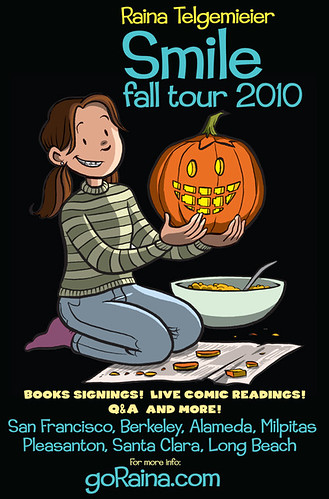Many kids these days dream of being rock musicians, and yet I wonder what the childhood of many famous rock musicians was like. Are they born with a true gift, or did they practice and practice their music? I do know that some children are drawn to music from an early age - it resonates with them, fills them. If your child is drawn to rock music, they will be fascinated by the new book
Jimi: Sounds Like a Rainbow
, written by
Gary Golio and illustrated by
Javaka Steptoe. It is absolutely worth seeking out.
Jimi: Sounds Like a Rainbow
by Gary Golio
illustrated by Javaka Steptoe
Boston: Clarion Books, 2010
ages 8 - 14
available on Amazon or your local library
or your local library


Jimi Hendrix was a child who soaked in the world around him, noticing sounds of the rain, the rushing water, truck engines and siren wailing. "With every sound, a color glowed in Jimmy's mind. Blue was the whoosh of cool water, splashing over rocks. Orange and red, the crackling of a campfire. Green, the rustle of a thousand leaves... He wondered: Could a person use music like chalks and colored pencils? Could someone paint pictures with sound?" These questions will resonate with students, speak to their hearts and make them think about how they see and hear the world around them.
Javaka Steptoe's artwork is full of color, as he uses mixed-media collage to show the impression of Jimi's childhood world. He steeped himself in Jimi's world and neighborhood, painting on plywood from a store in a Seattle neighborhood. As Steptoe writes in the illustrator's note, "I thought about the depth and texture of his (Hendrix's) music, so I layered and used bright colors: red, orange, yellow, green, blue, purple - rainbow colors."
I asked author Gary Golio to reflect on what reading meant to him during his childhood, and he responded with this wonderful essay:
Superhuman Reading
by Gary Golio
I was a voracious reader as a kid—but rarely of anything that would be considered
literary or
classic.
For me, the long-awaited ritual each month consisted of pulling a dollar from my miniature “safe” (a toy bank), and walking down to the center of my suburban 60’ s town on a lovely spring, fall, summer, or even winter day. Once I reached my destination—the nondescript delicatessen-stationery store that smelled of roast coffee seasoned with the aromas of frying bacon and newsprint—I ambled over to the wall display of magazines and felt like I had entered Paradise. There, calling out to me in their crisp, colorful covers, were the only reading materials I needed to fire up my imagination, inspire moral rectitude, and keep me out of trouble—the newest editions of DC and Marvel comics.
What a treasure those books were (and yes, I consider those Silver Age comics to be books, or at least the abbreviated graphic novels of their time). There was: Iron Man—to spark ideas for new electronic gadgets that I’ d invent in my home workshop for deterring would-be crooks; SpiderMan—to console my tortured pre-adolescent psyche that Peter Parker actually had a worse social life than I; Superman—to inspire visions of the Earth and other planets seen from outer space, for voyage there one day; and Dr. Strange—Master of the Mystic Arts, who humbly saved the human race and all manner of sentient beings from unimagined threats and evils, without our knowledge or gratitude.
These were my heroes, and they existed between the pages of comic books.
In addition—and people laugh when I first say this—comic books were overflowing with fantastic vocabulary words: invulnerable (from Superman); gossamer (from Dr. Strange); transistorized, from Iron Man; and rhetorical from SpiderMan, to name just a few. In fact, I credit my love of new and unusual words to these stories, whose characters often spoke with an archaic diction: “ This bastion of evil and its inhabitants shall see horrific ruination at my hand!” (Thor, Prince of Asgard).
Most of all, though, comic books instilled in me the joy and purposefulness of reading—to look outside of oneself, and to learn from other men and women (even if they were make believe) how to survive this sometimes wild ride that we call Life.
[Gary Golio, an artist and clinical social worker, is the author of
Jimi: Sounds Like a Rainbow: A Story of the Young Jimi Hendrix
, illustrated by Javaka Steptoe (Clarion Books), and the forthcoming
When Bob Met Woody: The Story of the Young Bob Dylan
, illustrated by Marc Burckhardt (Little, Brown).]
Thank you, Gary, for a wonderful essay about the power of reading and the way all types of reading can speak to us - just like all types of music can speak to us. You won't be surprised that comic books and graphic novels are the most popular books in our library today! They still grab kids and fill their imaginations.
For more reviews of Jimi: Sounds Like a Rainbow, check out other stops on the blog tour:
Picture Book of the Day
Mitali's Fire Escape
The Brown Bookshelf
Original Content
Tales from the Rushmore Kid
The Fourth Musketeer
There's also a great interview on
NPR's Weekend Edition from last weekend - I really enjoyed hearing Gary Golio and Javaka Steptoe, along with some of Hendrix's music.
The review copy was kindly sent by the publishers. If you make any purchases using the Amazon links on this site, a small portion will go to Great Kid Books (at no cost to you). Thank you for your support.
Magic Trixie
and at your local library











